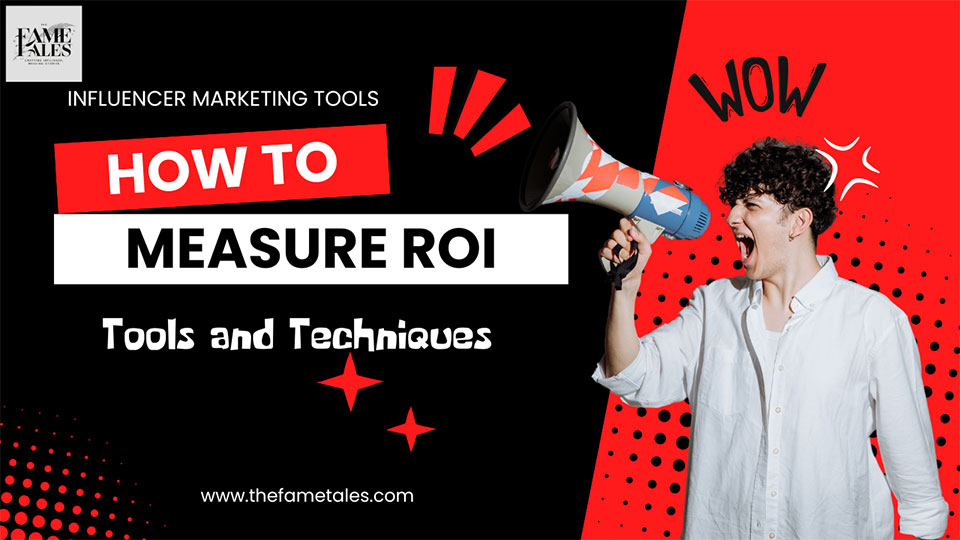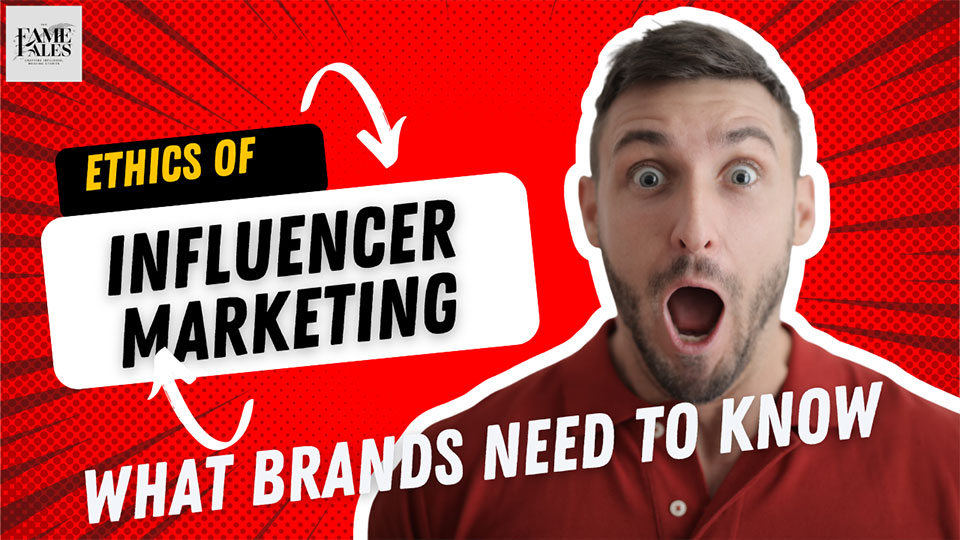The Rise of Micro-Influencers in 2024: Why Smaller is Bigger

Introduction
In the ever-evolving landscape of influencer marketing, 2024 marks a significant shift towards micro-influencers. Unlike their mega counterparts, micro-influencers possess smaller but highly engaged audiences, making them a valuable asset for brands aiming to connect authentically with consumers. This blog will explore the rise of micro-influencers, delve into the benefits they offer, and provide insights into why smaller is indeed bigger in the world of influencer marketing.
Understanding Micro-Influencers
Micro-influencers are individuals with a social media following typically ranging from 1,000 to 100,000. Despite their smaller follower count, they often boast higher engagement rates and more intimate connections with their audience. This group includes niche bloggers, community leaders, and everyday users who have cultivated trust and authenticity with their followers.
Key Characteristics of Micro-Influencers
- Niche Focus: Micro-influencers often specialize in specific niches, such as fitness, beauty, or travel, allowing them to attract a highly targeted audience.
- High Engagement: Their posts receive more likes, comments, and shares relative to their follower count, indicating a strong bond with their audience.
- Authenticity: They are perceived as more relatable and trustworthy, often sharing personal experiences and genuine opinions.
The Evolution of Influencer Marketing
The shift towards micro-influencers represents a broader evolution in influencer marketing. Initially dominated by mega-influencers and celebrities, the industry is now recognizing the value of smaller influencers. This evolution is driven by changing consumer preferences and the need for more authentic and engaging content.
From Mega to Micro: A Paradigm Shift
- Consumer Trust: Consumers are becoming increasingly skeptical of traditional advertising and celebrity endorsements. Micro-influencers, with their authentic content, are seen as more trustworthy.
- Cost-Effectiveness: Collaborations with micro-influencers are generally more affordable than those with macro or mega-influencers, making them accessible to small businesses and startups.
- Targeted Reach: Micro-influencers allow brands to reach specific demographics and niche markets more effectively.
Benefits of Micro-Influencers
1. Higher Engagement Rates
Micro-influencers often enjoy higher engagement rates compared to their larger counterparts. Their followers are more likely to interact with their content, leading to more meaningful connections and higher conversion rates.
2. Authenticity and Trust
Micro-influencers are perceived as genuine and relatable, which enhances their credibility. Their recommendations are seen as more authentic, fostering greater trust among their followers.
3. Cost-Effective Collaborations
For brands with limited marketing budgets, partnering with micro-influencers is a cost-effective strategy. These influencers typically charge less for collaborations, allowing brands to maximize their return on investment.
4. Targeted Audience
Micro-influencers often cater to specific niches, providing brands with access to highly targeted audiences. This precise targeting can lead to more effective marketing campaigns and better alignment with brand goals.
5. Flexibility and Creativity
Micro-influencers are often more flexible and open to creative collaborations. They can provide fresh and innovative perspectives, enhancing the overall appeal of marketing campaigns.
Micro-Influencers vs. Macro-Influencers
While both micro and macro-influencers have their merits, understanding their differences is crucial for crafting effective influencer marketing strategies.
Audience Size and Reach
- Macro-Influencers: Have a larger follower base (100,000 to 1 million+), offering broader reach but often lower engagement rates.
- Micro-Influencers: Have a smaller following but higher engagement and a more intimate connection with their audience.
Cost and Affordability
- Macro-Influencers: Typically command higher fees for collaborations, which may not be feasible for smaller brands.
- Micro-Influencers: Offer more affordable collaboration options, making them accessible to businesses of all sizes.
Engagement and Authenticity
- Macro-Influencers: May struggle with authenticity due to their commercialized image.
- Micro-Influencers: Are seen as more genuine, fostering stronger trust and engagement with their followers.
How to Find the Right Micro-Influencers
1. Define Your Goals
Before searching for micro-influencers, clearly define your marketing goals. Are you looking to increase brand awareness, drive sales, or enhance engagement? Knowing your objectives will guide your influencer selection process.
2. Identify Your Target Audience
Understanding your target audience is key to finding the right micro-influencers. Consider demographics, interests, and behaviors to ensure the influencer's audience aligns with your brand.
3. Use Influencer Discovery Tools
Several tools can help you find micro-influencers in your niche. Platforms like BuzzSumo, Influencity, and HypeAuditor provide insights into an influencer's reach, engagement, and audience demographics.
4. Analyze Engagement Rates
High engagement rates are a strong indicator of an influencer's ability to connect with their audience. Look for influencers with consistent likes, comments, and shares on their posts.
5. Check Authenticity
Ensure the influencer's followers and engagement are genuine. Tools like Social Blade can help you analyze an influencer's follower growth and engagement patterns.
Building Effective Campaigns with Micro-Influencers
Creating successful campaigns with micro-influencers requires careful planning and execution.
1. Set Clear Objectives
Define clear and measurable objectives for your campaign. Whether it's increasing brand awareness, driving sales, or boosting social media engagement, having specific goals will guide your campaign strategy.
2. Develop a Content Strategy
Work with influencers to develop a content strategy that aligns with your brand and resonates with their audience. Provide guidelines but allow influencers the creative freedom to craft authentic content.
3. Leverage Multiple Platforms
Utilize multiple social media platforms to maximize your reach. Different platforms offer unique advantages, so tailor your content to suit each platform's strengths.
4. Monitor and Adjust
Track the performance of your campaign in real-time. Use analytics tools to monitor engagement, reach, and conversions. Be prepared to make adjustments as needed to optimize your campaign's effectiveness.
Case Studies: Success Stories with Micro-Influencers
1. Glossier
Glossier, a beauty brand, effectively used micro-influencers to build a strong online presence. By partnering with everyday beauty enthusiasts and leveraging their authentic reviews, Glossier created a community of loyal customers and significantly boosted their sales.
2. Daniel Wellington
Daniel Wellington, a watch brand, utilized micro-influencers to grow their brand. They provided influencers with discount codes and free products, encouraging them to share their experiences on social media. This strategy resulted in widespread brand recognition and increased sales.
3. MVMT
MVMT, a fashion accessory brand, leveraged micro-influencers to promote their products. By targeting niche communities and fostering genuine relationships with influencers, MVMT achieved impressive engagement and conversion rates.
Measuring the Impact of Micro-Influencer Campaigns
1. Track Key Metrics
Identify key metrics that align with your campaign goals. These could include engagement rates, website traffic, conversion rates, and return on investment (ROI).
2. Use Analytics Tools
Leverage analytics tools to gather data and insights. Platforms like Google Analytics, Hootsuite, and Sprout Social can help you track and analyze the performance of your campaigns.
3. Evaluate ROI
Calculate the ROI of your micro-influencer marketing campaigns to assess their effectiveness. Compare the cost of your campaigns to the revenue generated or other measurable outcomes to determine their success.
4. Gather Feedback
Collect feedback from influencers and their audience to gain insights into what worked well and what could be improved. This feedback can help you refine your future campaigns.
Common Challenges and How to Overcome Them
1. Finding the Right Influencers
Finding the right micro-influencers can be challenging. Use influencer discovery tools and analyze engagement rates to identify the best matches for your brand.
2. Ensuring Authenticity
Ensuring the authenticity of micro-influencers is crucial. Conduct thorough research and use tools like Social Blade to verify their credibility.
3. Measuring Success
Measuring the success of micro-influencer campaigns can be complex. Define clear metrics and use analytics tools to track performance and ROI.
4. Managing Multiple Influencers
Managing multiple micro-influencers can be time-consuming. Consider using influencer management platforms to streamline the process and ensure consistent communication.
Conclusion
The rise of micro-influencers in 2024 underscores the growing importance of authenticity and engagement in influencer marketing. As consumers increasingly seek genuine connections, micro-influencers offer brands a unique opportunity to build trust, drive engagement, and achieve their marketing goals. By understanding the benefits of micro-influencers, finding the right partners, and creating effective campaigns, brands can harness the power of smaller influencers to achieve bigger results. Embrace the shift towards micro-influencers and leverage their potential to elevate your brand.
Other Blog
- Influencer Marketing for Small Businesses: Tips and Tricks
- The Impact of Gen Z on Influencer Marketing Strategies
- How to Find the Right Influencers for Your Brand in 2024
- The Rise of Micro-Influencers in 2024: Why Smaller is Bigger
- How to Measure ROI in Influencer Marketing: Tools and Techniques
- The Benefits of Long-Term Influencer Partnerships
- How to Use Influencer Marketing for Product Launches
- The Ethics of Influencer Marketing: What Brands Need to Know
- How to Avoid Common Pitfalls in Influencer Marketing Campaigns
- The Future of Influencer Marketing: Predictions for the Next 5 Years
Related Blogs

Influencer Marketing for Small Businesses: Tips and Tricks

The Impact of Gen Z on Influencer Marketing Strategies

How to Find the Right Influencers for Your Brand in 2024

The Rise of Micro-Influencers in 2024: Why Smaller is Bigger

How to Measure ROI in Influencer Marketing: Tools and Techniques

The Benefits of Long-Term Influencer Partnerships

How to Use Influencer Marketing for Product Launches

The Ethics of Influencer Marketing: What Brands Need to Know

How to Avoid Common Pitfalls in Influencer Marketing Campaigns

